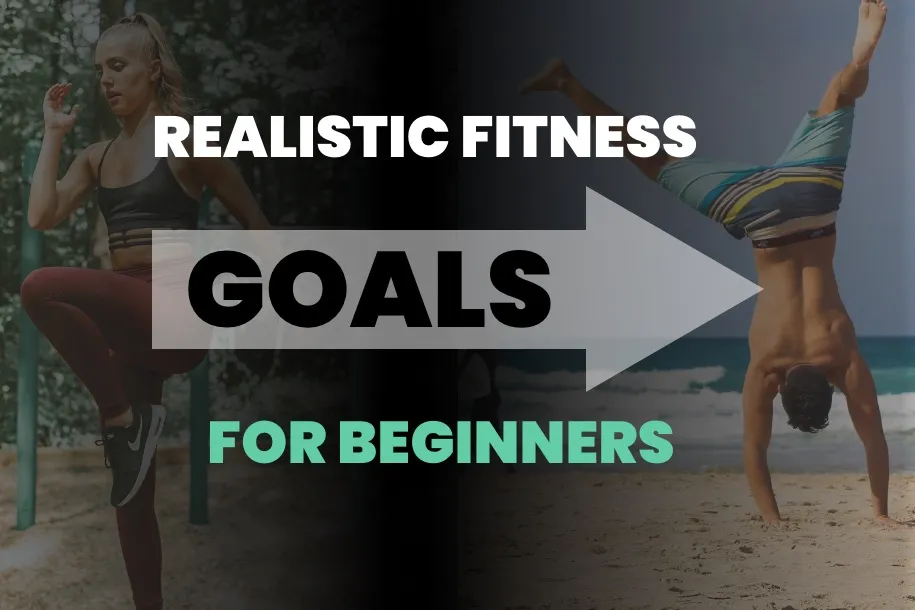Setting fitness goals is an exciting endeavor. Whether it’s achieving a healthier body, boosting energy, or fitting into your favorite outfit, the journey begins with enthusiasm. However, many fitness plans falter because the goals are overly ambitious. Sound familiar? The key to success lies in setting sustainable and achievable goals, not perfection. By doing so, you pave the way for lasting change that integrates seamlessly into your life.
This guide will show you how to craft fitness goals that stick. You’ll discover practical strategies to make consistent progress, tackle challenges, and enjoy the path to better health. Let’s dive in!
Understanding Realistic Fitness Goals
What Are Realistic Goals in Fitness?
Realistic fitness goals are those you can accomplish based on your current abilities and lifestyle. For example, aiming for 10,000 steps daily is more practical than preparing for a marathon if you’re just starting out. Achievable goals build confidence and provide steady momentum toward long-term success.
Common Misconceptions About Fitness Goals
- Quick Results: Expecting drastic changes in a short time often leads to frustration.
- Linear Progress: Fitness improvements are not always steady—some weeks may show faster progress, while others might feel stagnant.
The Psychological Impact of Achievable Goals
Reaching even small goals boosts self-confidence and motivation, creating a cycle of positive reinforcement. Conversely, unattainable goals often lead to disappointment and burnout.
Steps to Create Sustainable Fitness Goals
Step 1: Define Your “Why”
Identify the deeper reason behind your fitness journey. Is it better health, increased energy, or staying active with loved ones? Knowing your “why” adds personal significance and fuels your commitment.
Step 2: Evaluate Your Starting Point
Assess your current fitness level to establish a realistic baseline. Use fitness apps, measure basic metrics, or consult a trainer. Knowing where you stand helps create attainable goals.
Step 3: Set SMART Goals
SMART goals are:
- Specific: Clearly define your goal (e.g., walk 5,000 steps daily).
- Measurable: Track your progress using tools like pedometers or apps.
- Achievable: Ensure the goal is within your reach (e.g., increase steps from 2,000 to 5,000).
- Relevant: Align goals with broader objectives, like improving heart health.
- Time-bound: Set a timeframe, such as 30 days, to build consistency.
Aligning Fitness Goals with Your Lifestyle
Identifying Barriers to Consistency
Life’s demands can disrupt fitness routines. Recognizing potential challenges—like busy mornings or unexpected obligations—lets you plan ahead. For instance, if mornings are chaotic, schedule workouts in the evening or during lunch breaks.
Time Management for Busy Schedules
- Schedule Workouts: Treat them as unmissable appointments.
- Combine Activities: Take calls while walking or stretch during TV time.
- Use Short Workouts: High-intensity interval training (HIIT) offers maximum results in minimal time.
Adapting Goals to Life Changes
Fitness goals should evolve with your circumstances. If running becomes unfeasible due to injury, switch to low-impact exercises like swimming or yoga. Flexibility ensures long-term success.
Building a Plan for Success
Choosing the Right Workout
Select exercises that align with your goals:
- Weight loss: Focus on cardio, like running or cycling.
- Strength building: Incorporate weightlifting or resistance exercises.
- Stress relief: Practice yoga or Pilates.
Creating a Balanced Fitness Routine
Incorporate:
- Cardio: For heart health and calorie burning.
- Strength Training: To build muscle and enhance metabolism.
- Flexibility Exercises: To improve mobility and prevent injuries.
- Recovery: To allow the body to heal and grow stronger.
A typical week might include three cardio sessions, two strength sessions, and one flexibility-focused day.
Tracking Progress
Monitor progress with apps, wearables, or journals. Celebrate small wins, like lifting heavier weights or completing a longer run, to stay motivated.
Staying Motivated and Accountable
Staying Motivated During Plateaus
Progress isn’t always linear. To maintain motivation:
- Focus on non-scale victories, like improved energy or better sleep.
- Try new activities to keep things fresh.
- Revisit your “why” to stay grounded.
Building a Support System
Share your goals with friends, join fitness groups, or find an accountability partner. Support networks keep you on track and provide encouragement on tough days.
Overcoming Setbacks
Setbacks are inevitable. Missed a workout or indulged too much? Reflect, adjust, and move forward. Treat setbacks as learning opportunities.
Adjusting Goals Over Time
Knowing When to Push Harder
Once you achieve your initial goals, set new challenges to stay engaged. For example, increase walking steps or lift heavier weights as your fitness improves.
Recognizing the Need for Rest
Overtraining can hinder progress. Listen to your body and scale back when necessary to prevent injuries or burnout.
Celebrating Milestones
Reward achievements, no matter how small. Completing your first 5K? Treat yourself to something special. Celebrating reinforces positive habits.
Common Mistakes to Avoid
- Unrealistic Expectations: Fitness takes time. Avoid comparing your journey to others.
- Skipping Professional Advice: Beginners benefit from expert guidance to avoid mistakes.
- Focusing on Quick Fixes: Prioritize habits that promote lasting health over fleeting results.
Conclusion
Realistic fitness goals lay the foundation for lasting change. By aligning your targets with your lifestyle, celebrating progress, and staying flexible, you can enjoy the journey to better health. Remember, it’s about building habits, not chasing perfection. Start small, stay consistent, and keep moving forward!
FAQs
- What’s the best way to track fitness progress?
Use apps, journals, or wearables to log workouts and measurements. - How soon will I see results?
Most people notice changes within 4-6 weeks with consistent effort. - Can I set fitness goals without a trainer?
Yes, with reliable resources, apps, and community support. - How do I balance fitness with a busy schedule?
Incorporate short workouts into daily routines, like walking during breaks. - What if I miss a goal?
Learn from setbacks, adjust your plan, and continue. Setbacks are part of growth.
